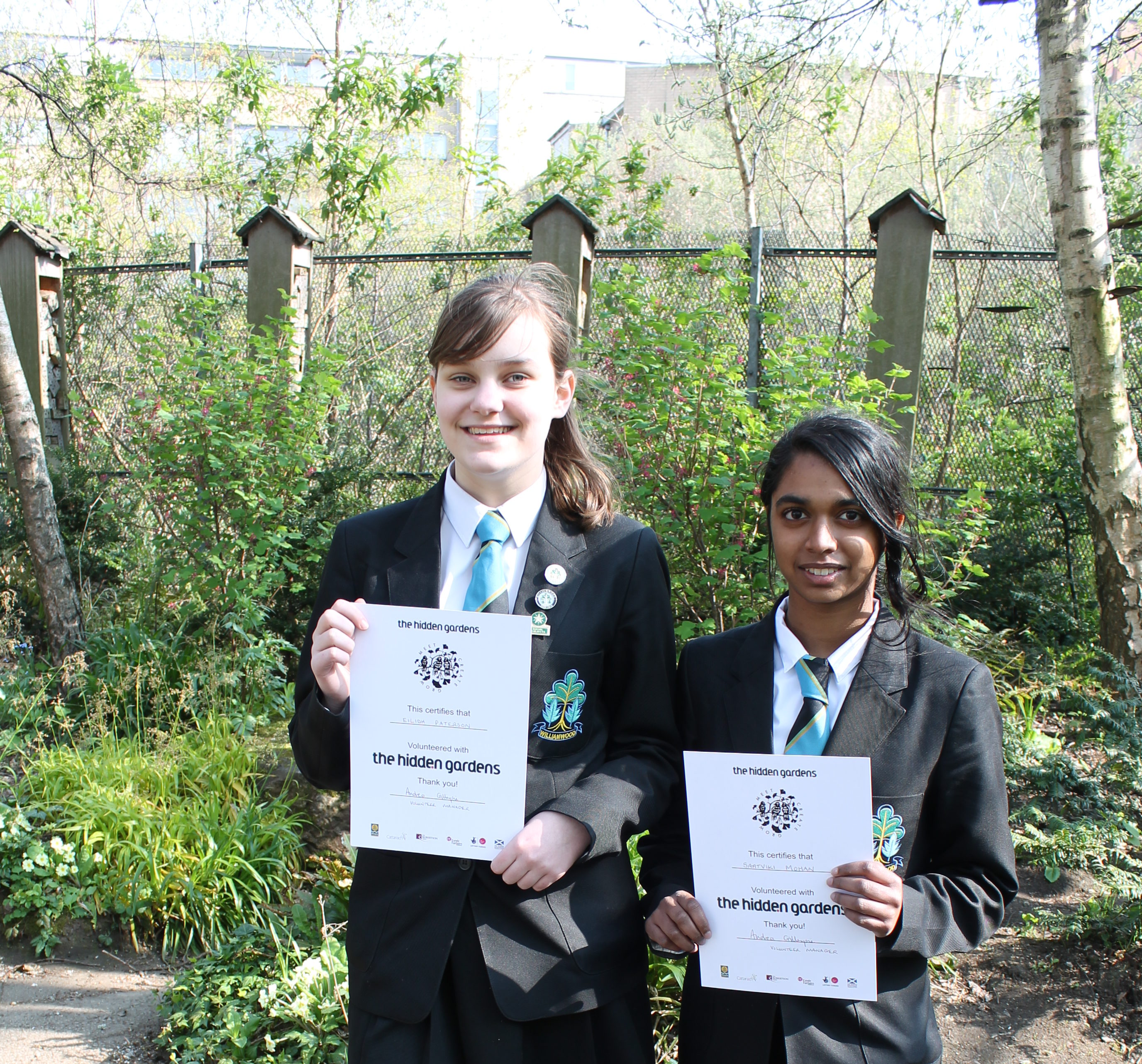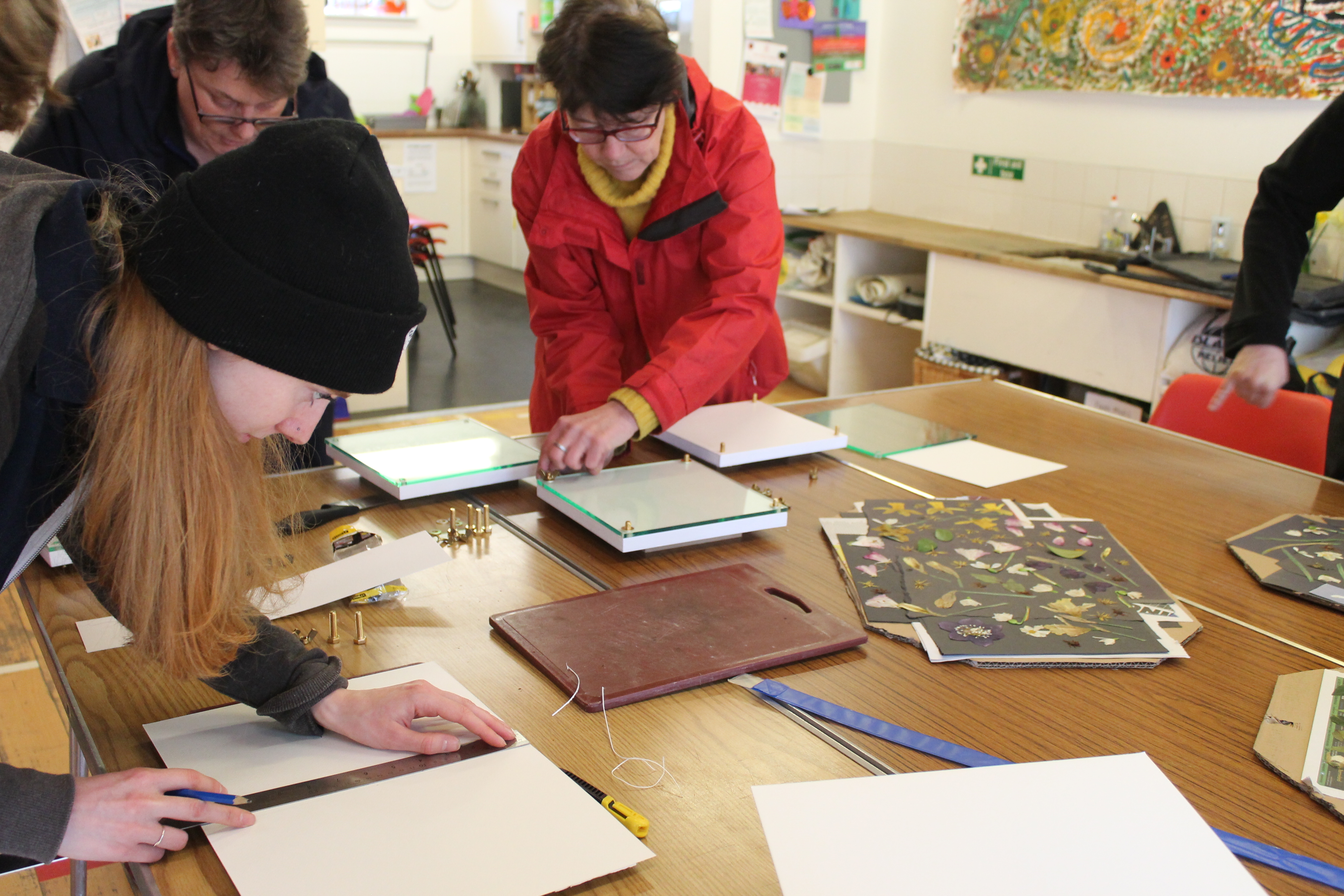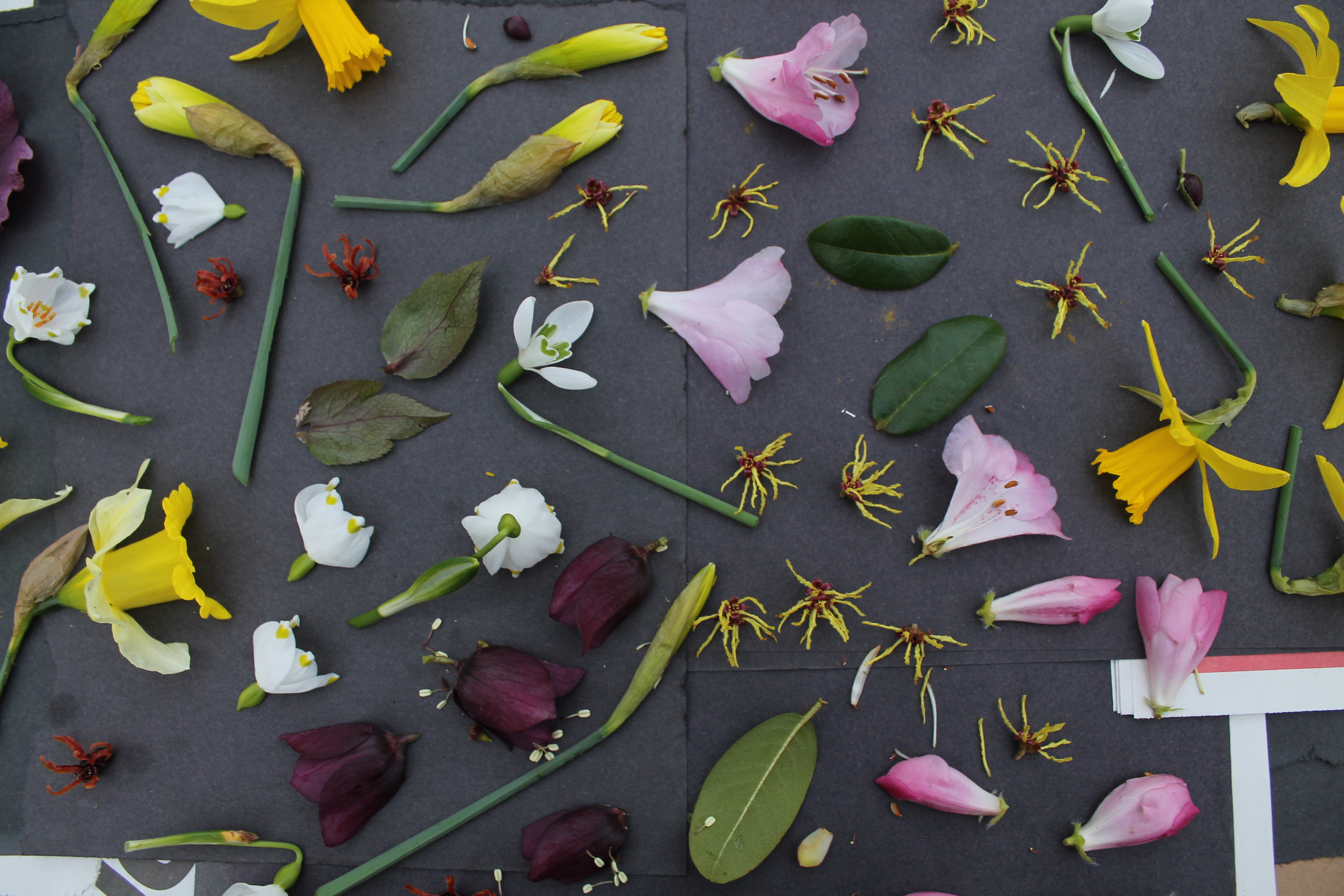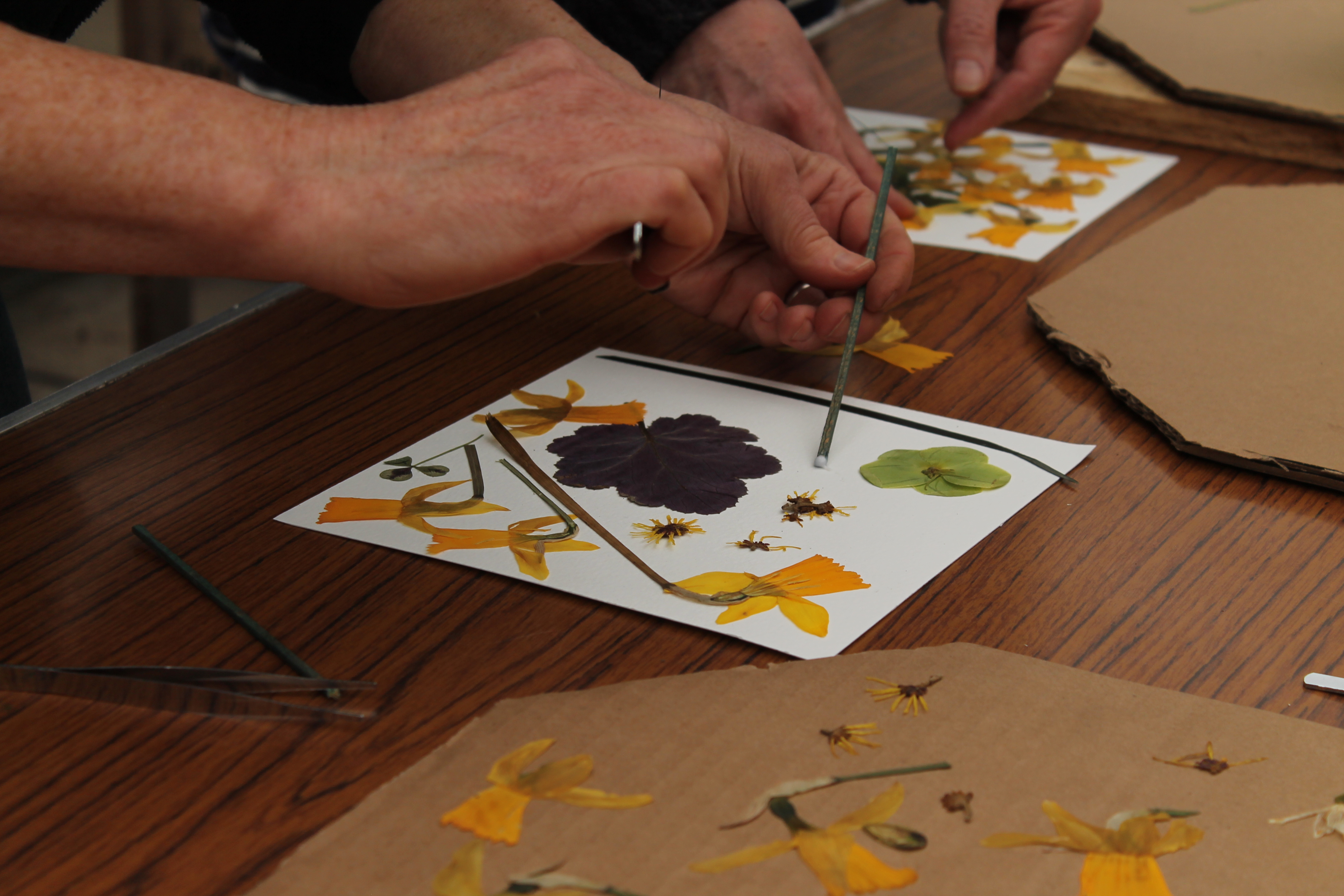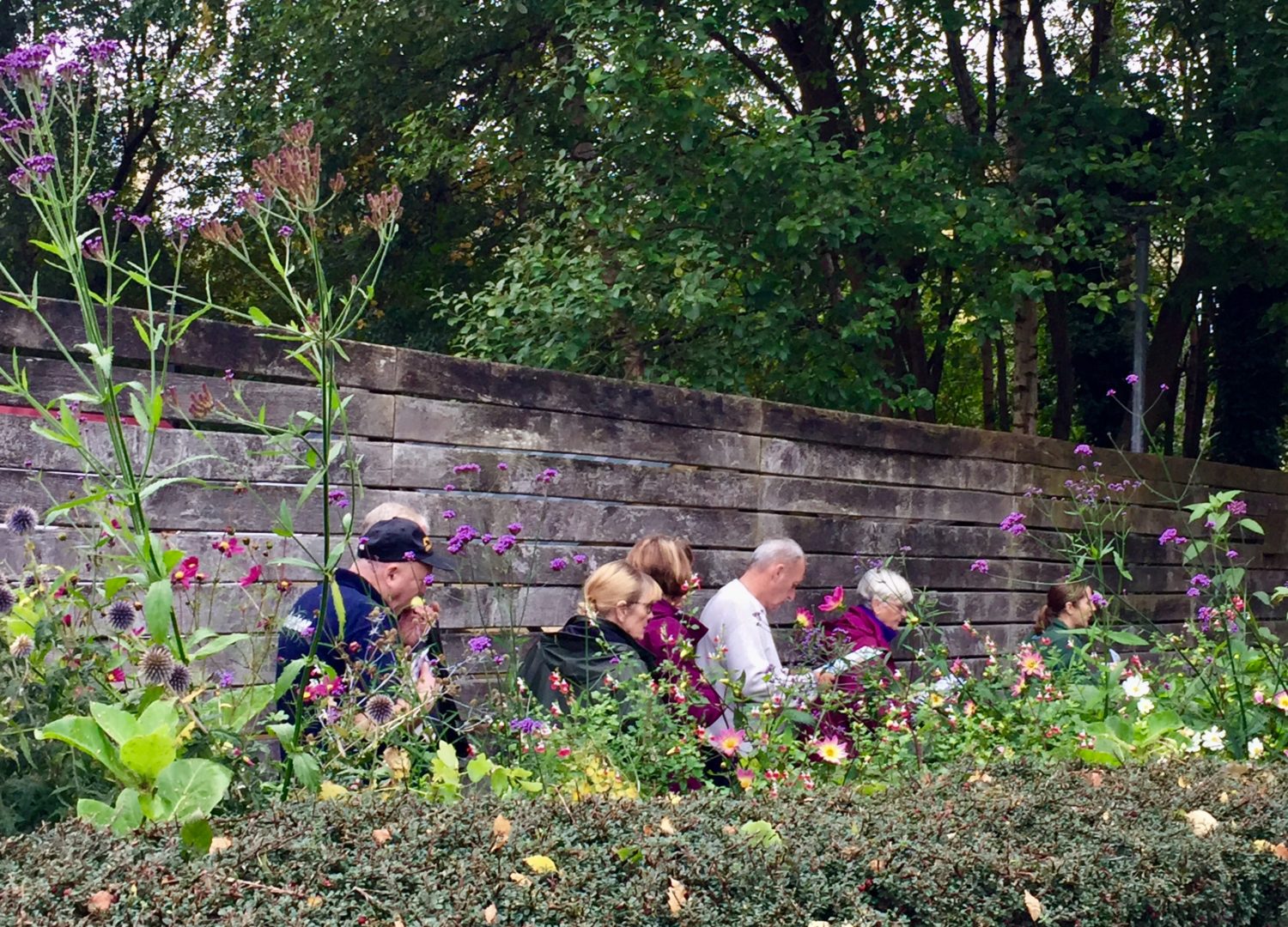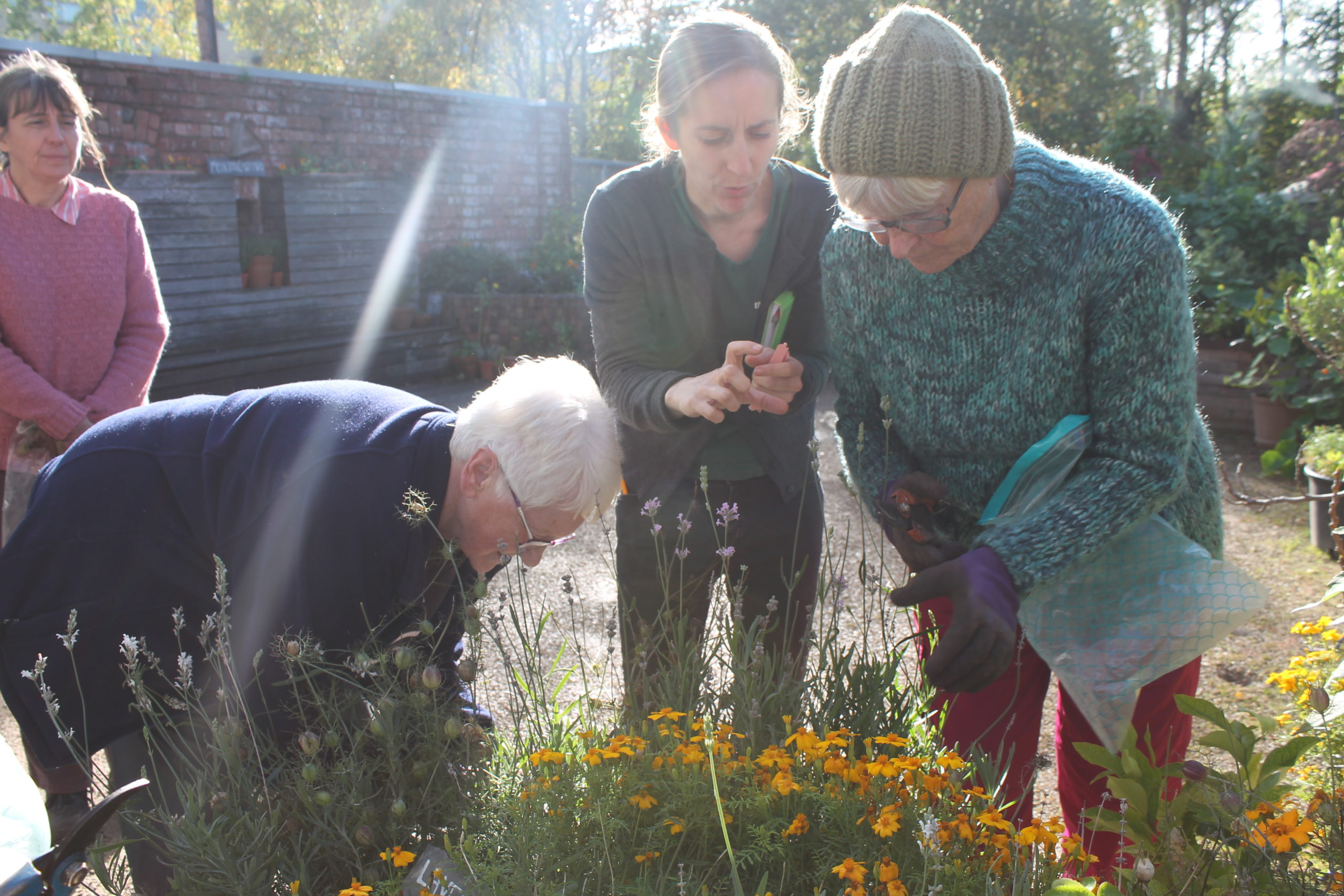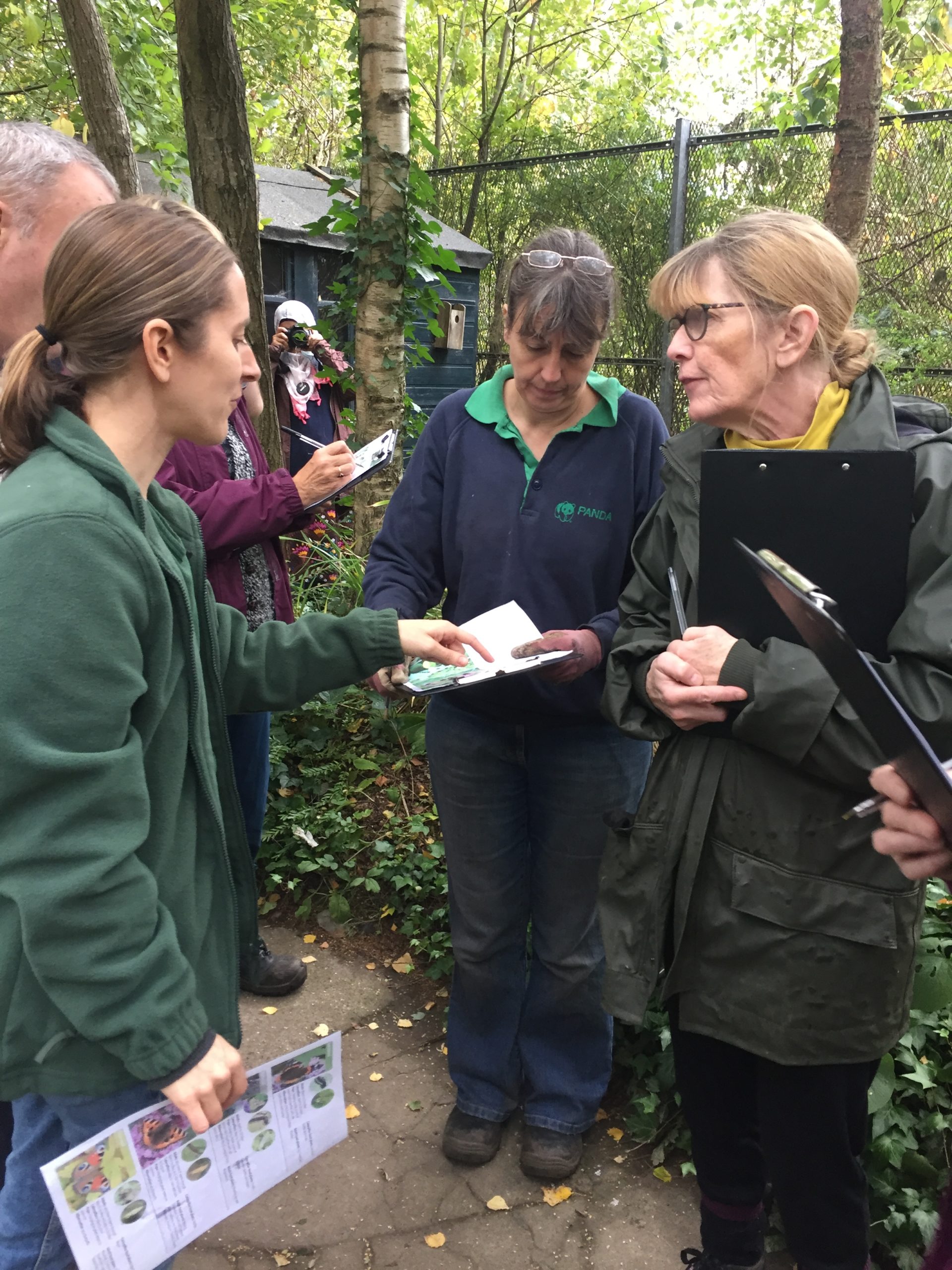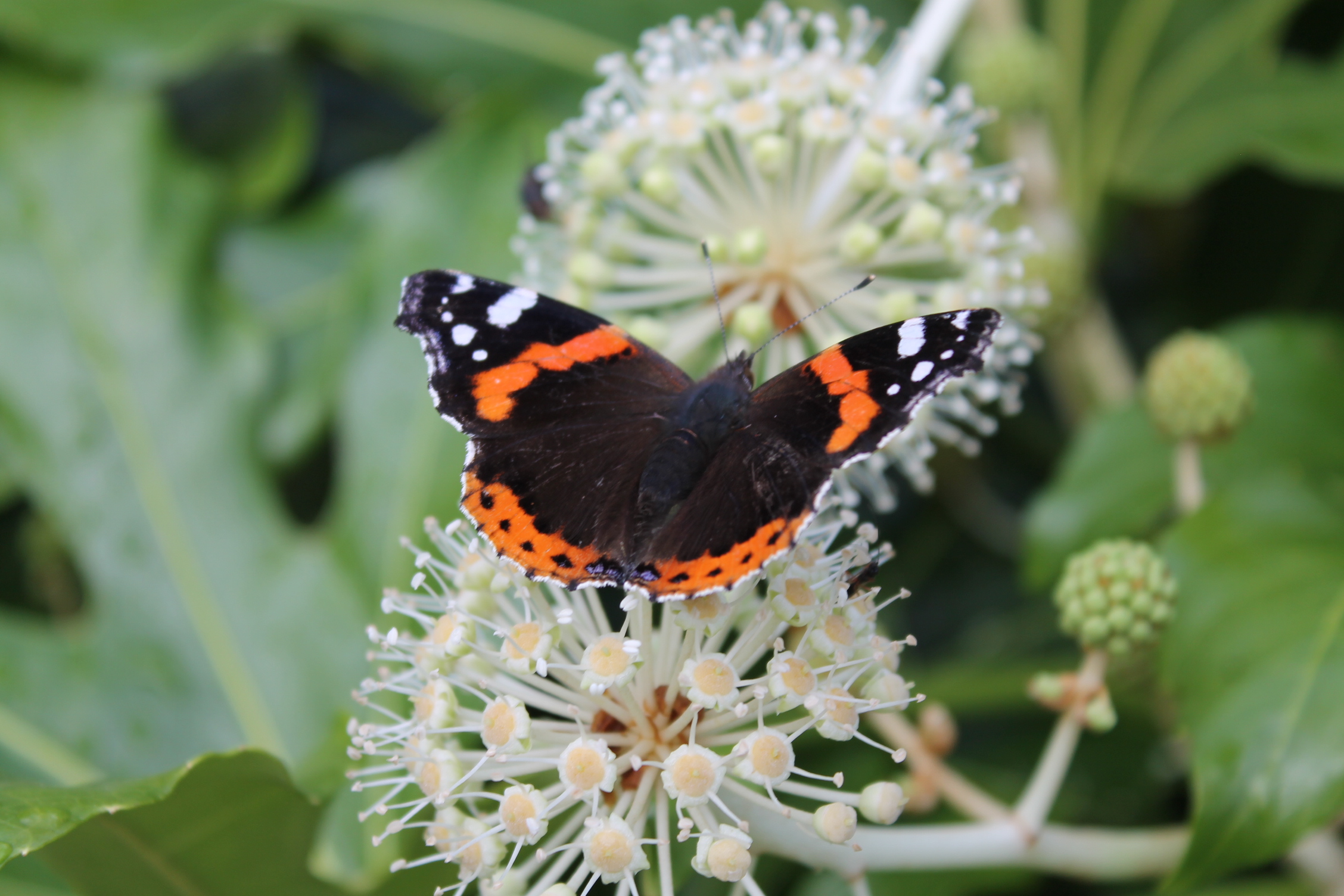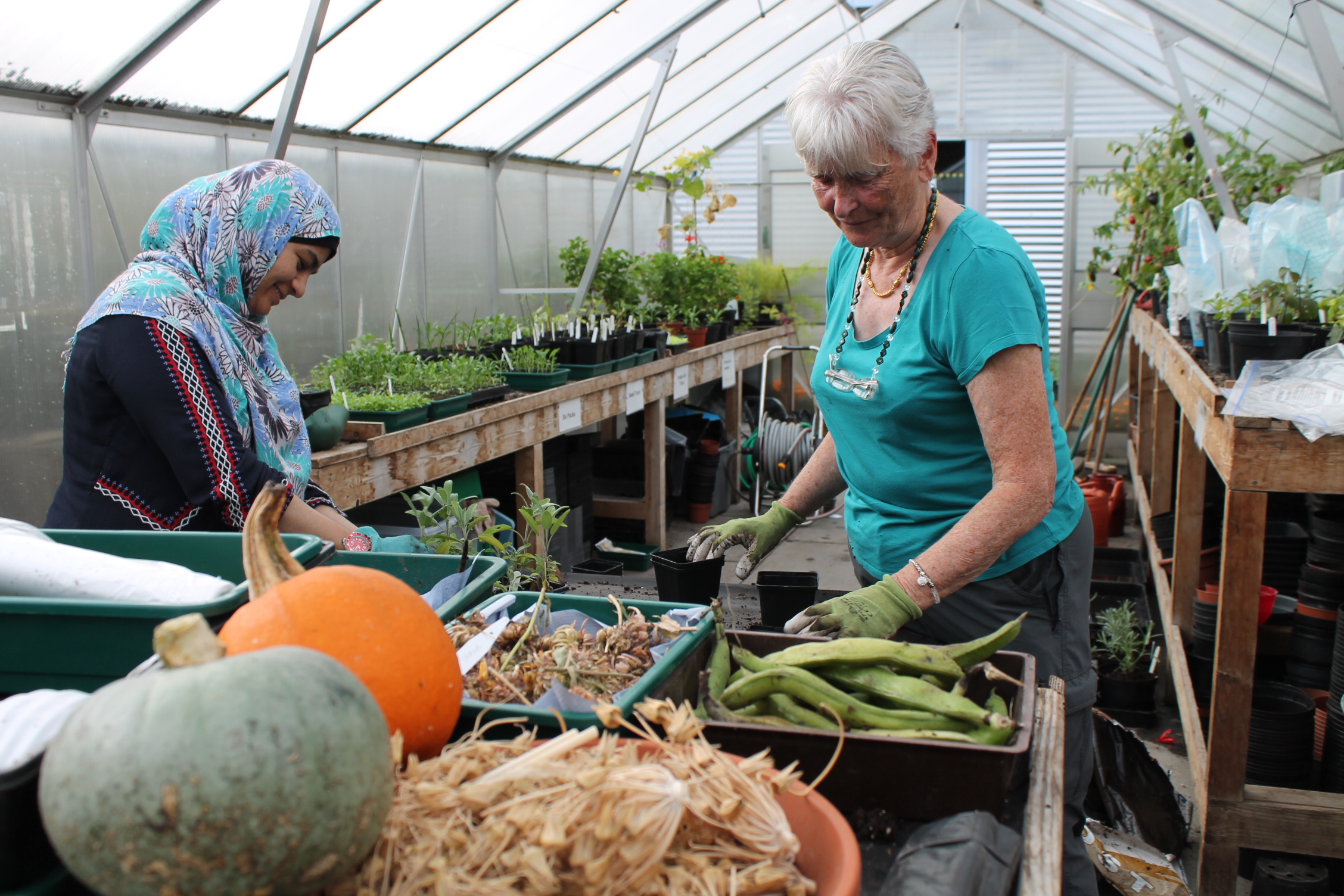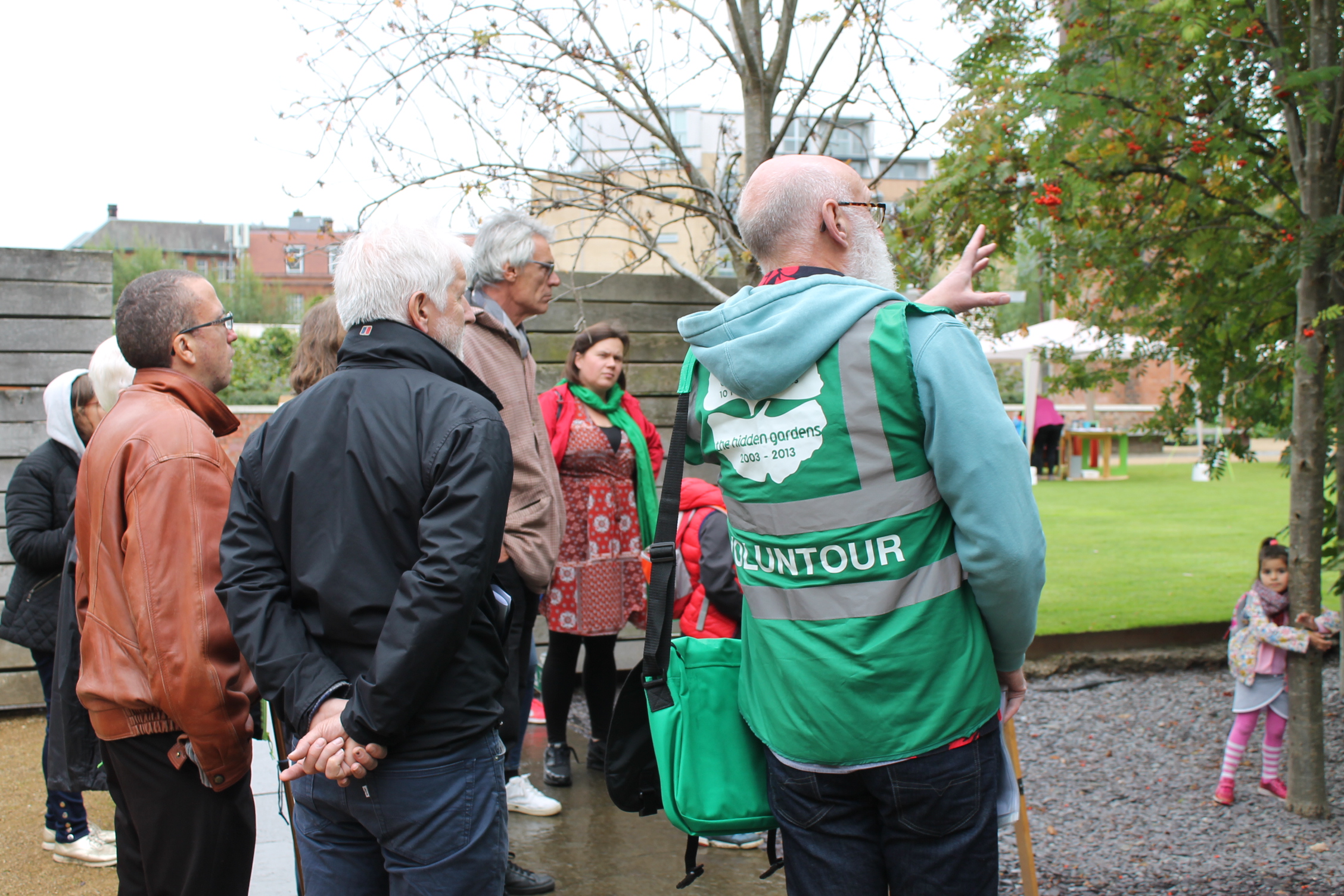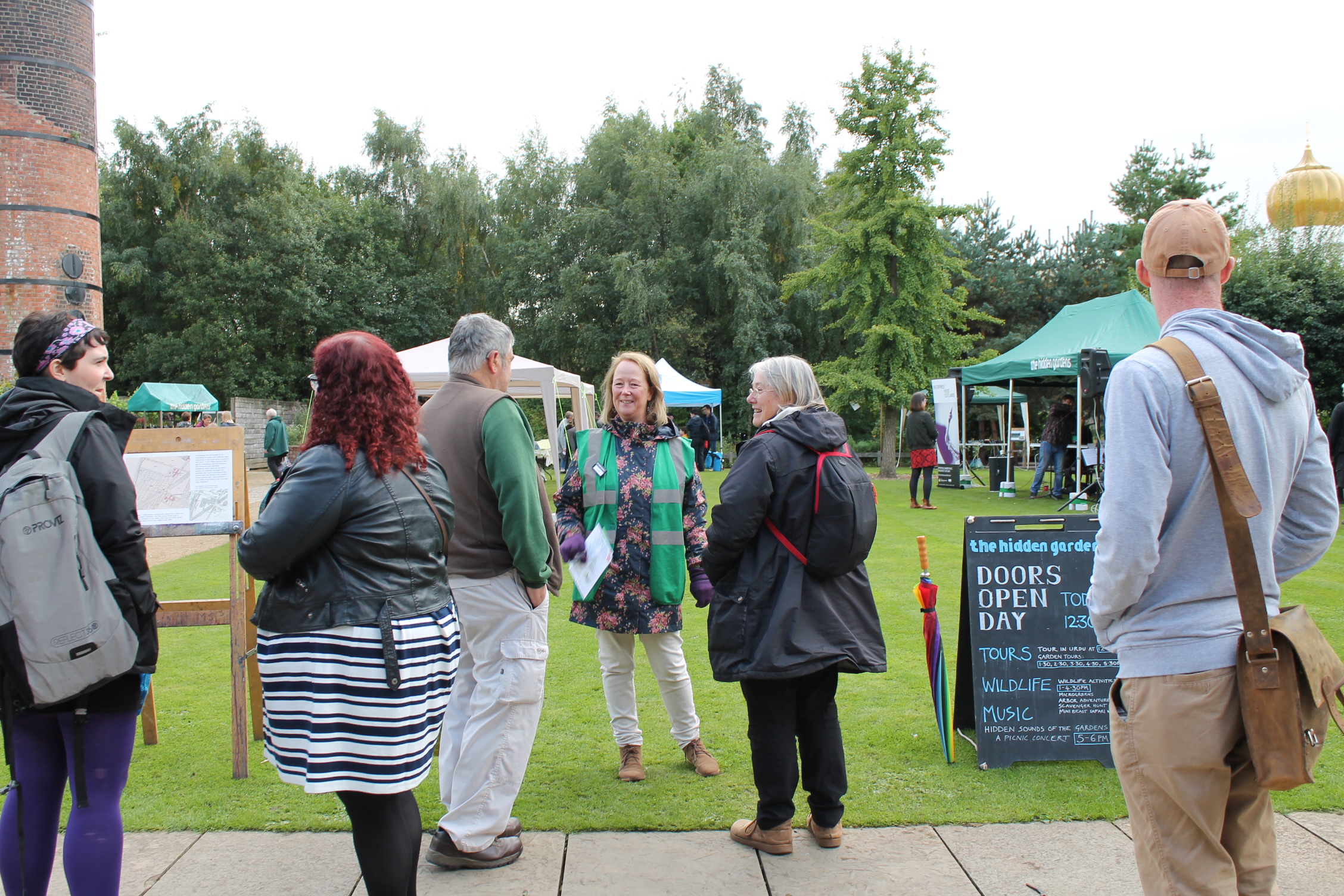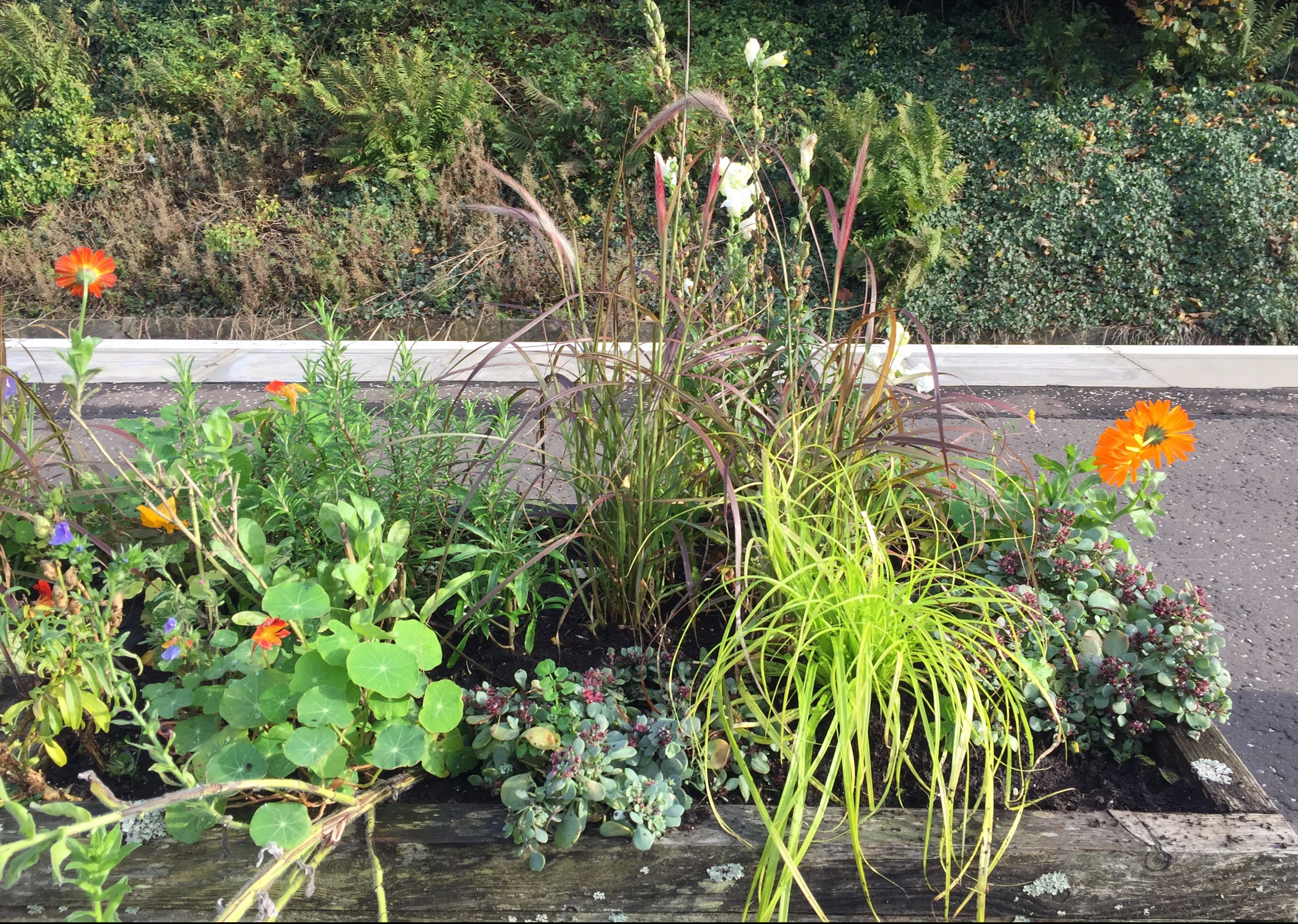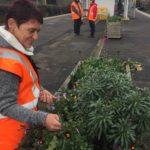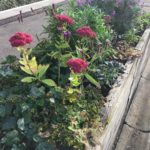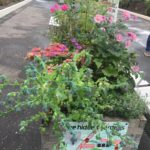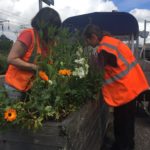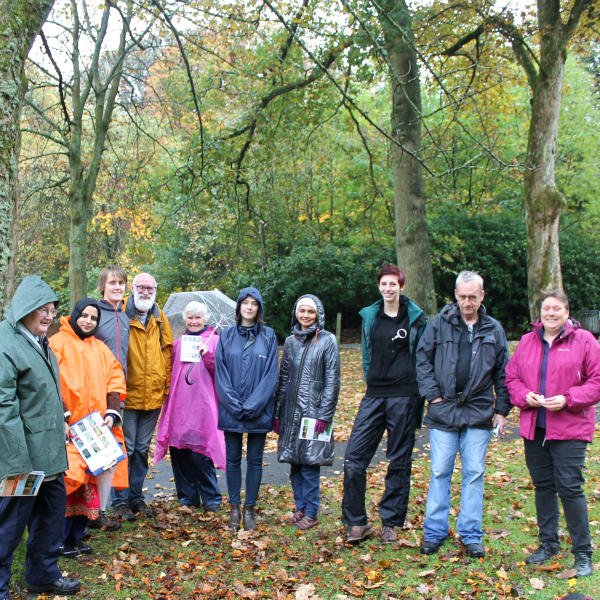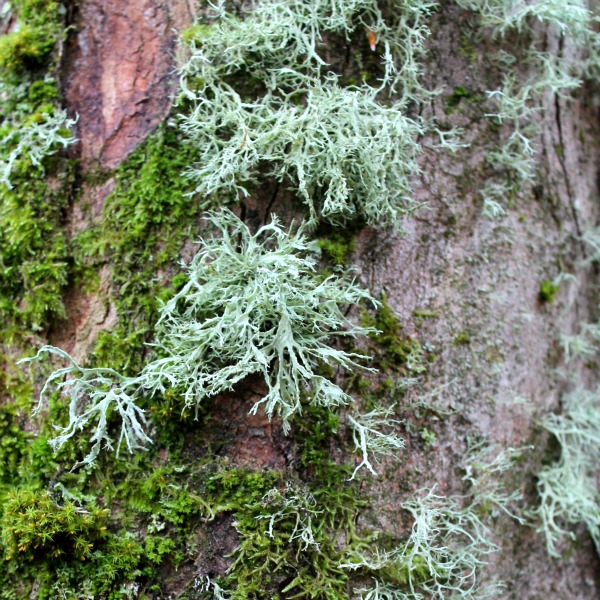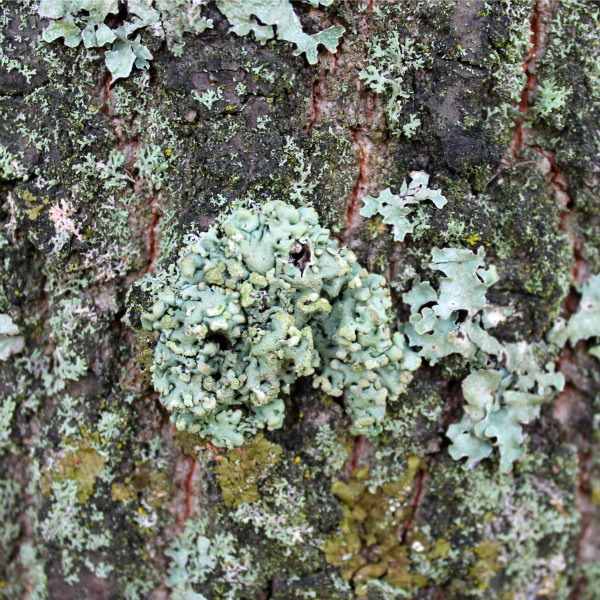My name is Vicki and as part of my Duke of Edinburgh award, I decided to volunteer at The Hidden Gardens due to the unique volunteering experience it offered and how it differs greatly from regular places to volunteer such as charity shops. From gardening to helping out at a multitude of events, I have learned a lot of new techniques and met many amazing and courteous people. I have had an enthralling and enjoyable time whilst participating and helping here.
My name is Eilidh and with my friend, Vicki, I volunteered at The Hidden Gardens for the Duke of Edinburgh as a change to the usual volunteering opportunities available for most young people such as helping at charity shops. At The Hidden Gardens we helped out with lots of fun and educational activities.
We helped at weekend gardening: repotting plants into new pots, labelling plants that needed labels, weeding and so much more that if I put it all in it will start to look like a shopping list!
We helped at the “Into the Wild” outdoor events that took place at The Hidden Gardens such as Bat Night, Coffee and Chocolate and Starry Nights. Our main task for each event was to help serve food to visitors. There was a wide variety of food from curry to cake. If we were there early enough, we gave a helping hand in setting everything up before everyone came. At the bat event we helped visitors of all ages make pin badges.
We also had opportunities to take part in the events. An example of something we enjoyed was making truffles because there was a huge range of flavours to try. For the Starry Night event, we thoroughly enjoyed the planetarium and we learned a lot of interesting facts. For bat night, we used meters to detect the frequencies that bats produced. In the end, we saw two bats! In conclusion, we thought that the Into Wild events were interesting and amazing and we are looking forward to any future events.
Weekend Gardening
Vicki: During the weekends, I helped with the gardening. There were a variety of tasks to help out with such raking and refilling flower beds. I have learned a lot about gardening and different species of plants. I have become more social and happy to talk to new people. In addition it has helped me get fitter as well. I would highly recommend this for anyone who enjoys being outdoors and mingling with new people. It is a hefty job but very rewarding and fun!
Eilidh: I really enjoyed the weekend gardening as I got to meet new people and do things in a different environment. This helped me become a better person and gave me the opportunity to meet many wonderful new people. At some points you really needed some muscle for example when someone put too much topsoil in the wheelbarrow!
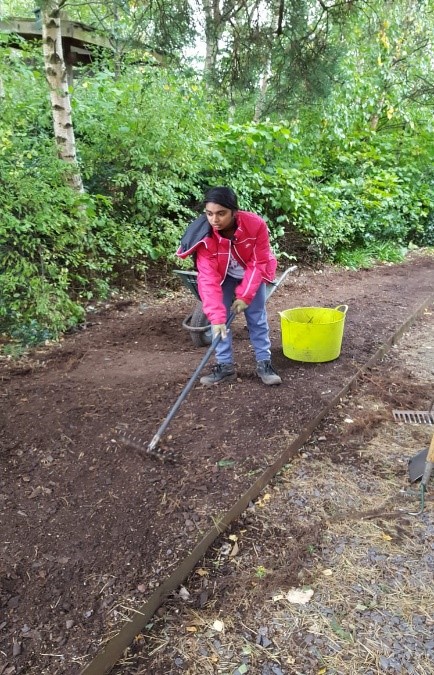
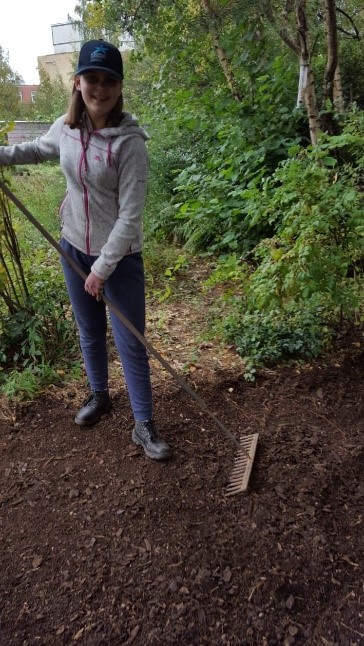
The Faery Trail
Vicki: One of the events we helped set up was a nighttime event called The Faery Trail. We decorated a blackboard to go at the street entrance to Tramway to catch the attention of passersby to come and see the faeries. The faeries were created by a very talented artist Lucas Chih- Peng Kao and were then projected onto different landscapes such as small hills and tree trunks. The Hidden Gardens was decorated with many pretty lights and lanterns to form a fantasy and magical atmosphere. We helped with handing out leaflets and showing people around. It was a fantastic experience!
Eilidh: At the events normally we would help serve food but at The Faery Trail event we were asked to create the sign that people would see when walking towards The Hidden Gardens. At this event we were given the job of showing people which way to go in the dark and helping to keep them safe. To me this is where I really came out of my shell as I had to meet the public. I was the first face they would see before going into The Faery trail and I had to talk to them. All in all it was a very enjoyable experience and after the DofE award, I will probably continue to volunteer here.
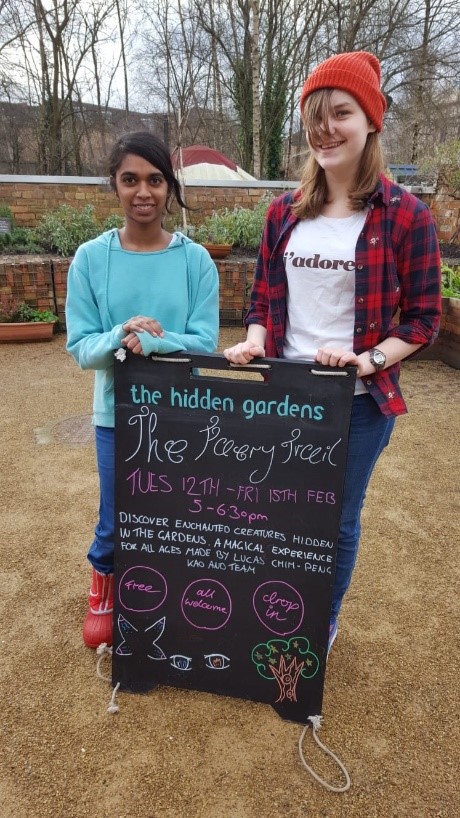
Many thanks to our young volunteers Vicki and Eilidh and accompanying adults who reliably turned up for every opportunity, were happy to try new things and turn their hand to any task we asked them. Thank you!

